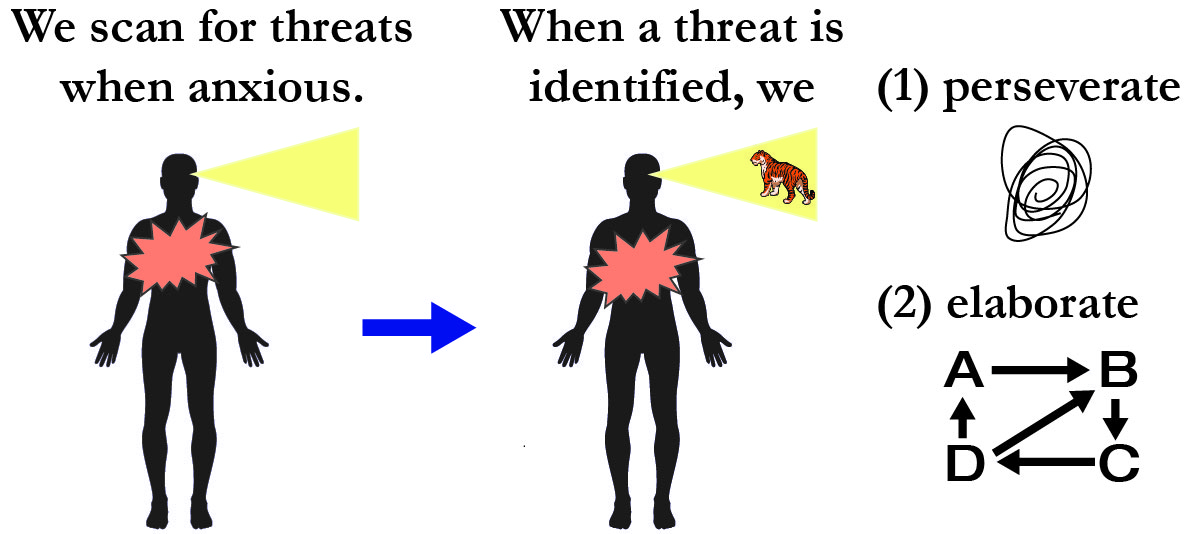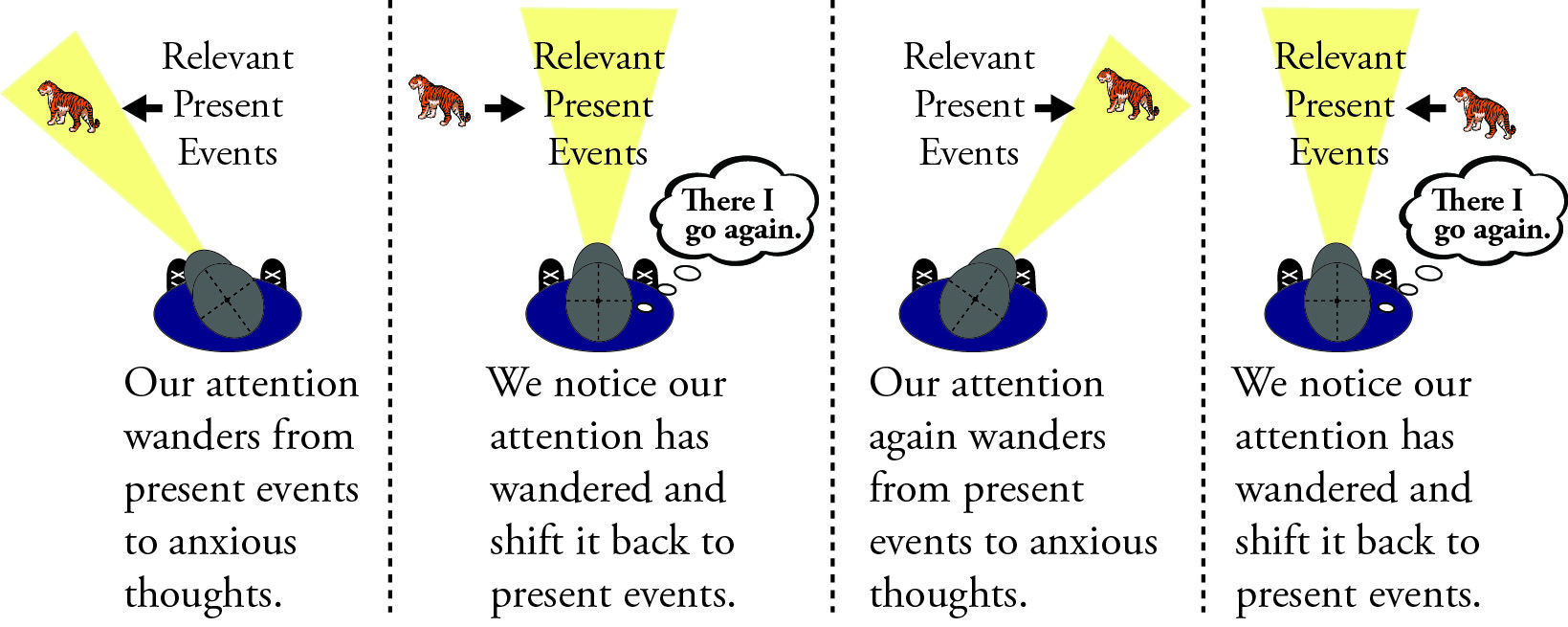Attentional Control (A)
Recall that an anxious mind is biased toward scanning the world for threats. Our brain searches for tigers more than fences, flowers, and coffee cups. Once a threat is identified, two things tend to happen: perseveration and elaboration.
Perseveration involves thinking about something over and over again. For example, we may spend hours asking ourselves, “What if I lose my job . . . What if I lose my job . . . What if I lose my job?” Perseveration is repetitive and unproductive. It seems like we are working on solving a problem, but we are really just spinning our wheels.
Patients describe elaboration as “going down the rabbit hole.” It involves engaging with thoughts that cross through our minds, as if we are dancing or wrestling with them.
There is always a distinction between having a thought and actively thinking. The thought, “What if I lose my job?” may simply pop into our heads. Once it is there, however, we start elaborating.
“What if I lose my job? Oh, I won’t lose my job — I got a good performance evaluation recently. But how will I pay my mortgage if I do? And what will others think of me? Wait, I’m not going to lose my job. But there were layoffs recently. What if I lose my job?”
When Thought A enters our minds, we are merely having a thought. When we go from Thought A to B to C to D to B to C to D to A, now we are actively thinking. This is what it means to engage in elaboration.
Here is a recap of how anxiety affects attention and what happens next:
With practice, a technique called “attentional control” cuts off this perseverative, elaborative process and allows anxiety to fade over time. The task is noticing when our attention wanders to anxious thoughts. To do so, it helps to use the statement, “There I go again.” Then, we gently but firmly shift our spotlight back to relevant present events. This includes work activities, conversations, television shows, sporting events, birdsong, lovemaking, music playing, and anything else that is happening now.
A top view of this process looks like the following:
Dylan M. Kollman, PhD
dkollman@realanxietysolutions.com








